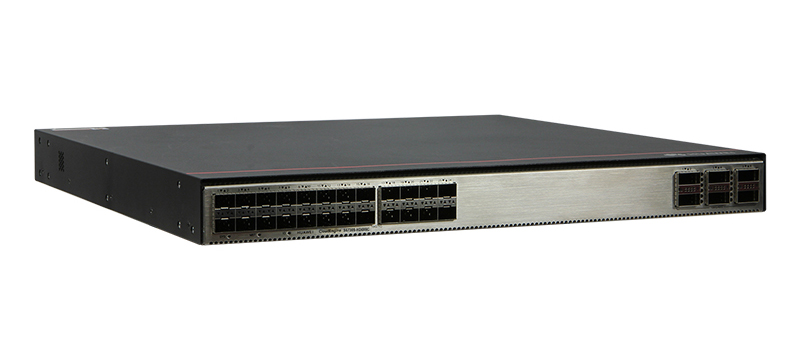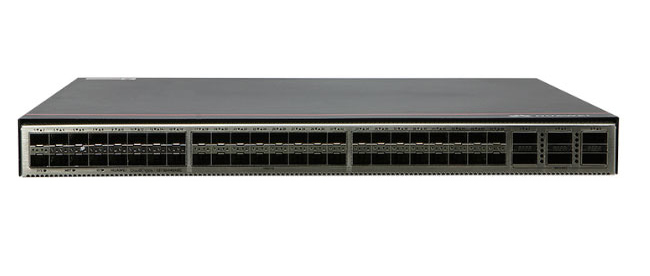































For as long as they've existed, Google's Pixel phones have been my favorite Android devices released each year. The only possible exception to that tradition was the Pixel 4 XL, but let's not dwell on the past. With this year's Pixel 7 and Pixel 7 Pro, Google is doubling down on providing Android fans and iPhone converts with a pure Google experience, through and through.
If you're looking to break away from Samsung's Android ecosystem, the Pixel 7 and Pixel 7 Pro are waiting for you with open arms.It's not as easy as it sounds, though. Google is in a weird position of facing an uphill battle to attract users to its own hardware, not software. As competitors like Apple and Samsung are introducing new ways to interact with their respective smartphones, Google is left to play third fiddle, needing to produce a design that's both distinguishable and practical.
Are the Pixel 7 and Pixel 7 Pro the phones that can push Google's smartphone ambitions into the mainstream? I can't answer that, but I can say that Google got a lot right with this year's Pixel crop. Let's dig in.
| Pixel 7 | Pixel 7 Pro | |
| Processor | Google Tensor G2 | Google Tensor G2 |
| Display | 6.3-inch 1080x2400 FHD+ OLED 90Hz Smooth Display | 6.7-inch 1440x3120 QHD+ OLED 120Hz Smooth Display |
| Memory | 8GB | 12GB |
| Storage | 128GB, 256GB | 128GB, 256GB, 512GB |
| Rear Cameras | 50MP Octa PD Quad Bayer wide camera, 12MP ultrawide | 50MP Octa PD Quad Bayer wide camera, 12MP ultrawide, 48MP Octa PD Quad Bayer telephoto |
| Front Camera | 10.8MP | 10.8MP |
| Battery | 4,335mAh | 5,000mAh |
| Connectivity | USB-C 3.2 Gen 2, 802.11ax, Bluetooth 5.2, 5G (Sub6/mmWave) | USB-C 3.2 Gen 2, 802.11ax, Bluetooth 5.2, 5G (Sub6/mmWave) |
| Operating system | Android 13 | Android 13 |
| Colors | Obsidian, Snow, Lemongrass | Obsidian, Snow, Hazel |
Google is horrible at keeping new devices a secret, so when the company pre-announced the Pixel 7 and Pixel 7 Pro earlier this year alongside a handful of renders, there was little left to the imagination of what the phones would look like.
In short, both phones look a lot like the Pixel 6 and Pixel 6 Pro that I reviewed last year. There's a camera bar that protrudes from the back of the phone, but instead of being all-black in an attempt to hide it, the Pixel 7's camera bump is aluminum and matches the three different color options for each model. Those options for the Pixel 7 Pro are Snow, Obsidian and Hazel. For the Pixel 7, the colors include Snow, Obsidian and Lemongrass.
The Pixel 7 Pro in Hazel (left) and the Pixel 7 in Lemongrass (right).
Jason Cipriani/One key difference is that while the camera bar on the Pixel 6 line stopped as soon as it reached the edge of the phone, the Pixel 7's bar wraps around and blends into the edge of the phone. It's a very minor detail, but if you have a chance to look at and feel both phones, you'll see that it makes a big difference. Instead of looking like the phone was designed in sections and pieced together like Lego pieces -- as it does on the Pixel 6 -- the Pixel 7 looks more cohesive and thought out.
The Pixel 7 Pro camera bar wraps around the edges.
Jason Cipriani/Inside the camera bar on the Pixel 7 is a 50-megapixel Octa PD Quad Bayer wide camera and a 12-megapixel ultra-wide camera. On the Pixel 7 Pro you'll find the same two cameras, with an additional 48-megapixel quad Bayer PD telephoto lens that supports up to 30x Super Res Zoom -- with an optical zoom of up to 5x.
On the right edge of the phone is where you'll find the power button and volume up/down keys. The left edge is home to the SIM card tray -- yes, it still has one. And the bottom of the phone is where the USB-C port is found for charging and transferring data.
The Pixel 7 has a 6.3-inch display, while the Pixel 7 Pro has a 6.7-inch screen. That's the same size of displays used last year. Both screens have a 10.8-megapixel front-facing hole punch camera that also doubles as the means to enable the Pixel 7's new Face Unlock feature for, as its name implies, unlocking your phone. There's still an under-display fingerprint sensor that's used for unlocking the phone as well as signing into apps (more details about how this all works in a minute).
More: Google Pixel 7 vs Pixel 7 Pro
My biggest takeaway about the design after using both phones for the last week is that they are definitely a higher-quality and premium-tier take on the Pixel 6.
Put it another way: one thing Apple does to differentiate iPhone 14 models from the iPhone 14 Pro models is to use higher-quality material and different colors for a premium -- or Pro -- look and feel. The difference between the Pixel 6 and Pixel 7 is the same.
With the Pixel 6, Google unveiled its first in-house processor in the form of the Google Tensor. Along with new phones, Google also announced a new processor, the Google Tensor G2. Both the Pixel 7 and 7 Pro are using the Tensor G2, with the Pixel 7 boasting 8GB of LPDDR5 memory and the Pixel 7 Pro using 12GB of the same memory.
You can get either model with storage amounts of 128GB or 256GB, with the Pro offering coming in a 512GB storage configuration.
On paper, the Tensor G2 is very similar to the original Tensor. There are still eight cores: four 1.8GHz efficient cores, two 2.35GHz cores and two 2.85GHz cores. That's the same number of cores, with slightly higher speeds for the faster cores.
Those numbers don't mean much in daily use, and it's the exact opposite approach of Apple, which loves to tout performance gains and improvements on each generation or iteration of its homemade chips.
More: How does the Pixel 7 Pro stack up against the best phones?
As for the Pixel 7 and 7 Pro, my experience with opening apps, multitasking, and using features like Unblur in the Photos app have all been smooth and free of hiccups. Geekbench 5 isn't compatible with the Pixel 7 quite yet, so I can't give you any benchmark scores to compare to the iPhone 14, iPhone 14 Pro or even last year's Pixels. But I imagine the numbers will show the Pixel 7s are slightly faster than the Pixel 6, with much lower scores than the latest iPhones.
Face Unlock is one area where the Tensor G2's performance is on full display. As you pick up the Pixel 7 or remove it from your pocket, a small white ring lights up around the front-facing camera to let you know it's looking for your face, and usually by the time I realize it's lit up, the fingerprint sensor icon switches from a fingerprint icon to an unlocked icon, indicating that its used Face Unlock to authenticate and unlock the phone.
Unfortunately, that's as far as Face Unlock goes. Its name -- face unlock -- is literally what it does. It uses your face to unlock your phone, and nothing else. For signing into banking apps or password managers, you'll need to use the under-display fingerprint reader. There were a lot of complaints about the fingerprint reader on the Pixel 6 not working properly, and while I never really experienced any issues unless I was using the phone in direct sunlight, I do feel that the Pixel 7's sensor is more accurate and much faster. Again, likely an area where the Tensor G2 is being taken advantage of.
More: Google Pixel 7 Pro vs iPhone 14 Pro: Which should you buy?
Inside the camera bar on the Pixel 7 is a 50-megapixel Octa PD Quad Bayer wide camera and a 12-megapixel ultra-wide camera. On the Pixel 7 Pro you'll find the same two cameras, with an additional 48-megapixel quad Bayer PD telephoto lens that supports up to 30x Super Res Zoom -- with an optical zoom of up to 5x.
After leaving the Made By Google event and picking up my review devices, I set up the Pixel 7 Pro, eager to test out the 30x Super Res Zoom as I walked around Williamsburg. I eventually found myself standing on a pier, peering across the river into Manhattan, testing out the cameras.
I can't print the first thing that came out of my mouth after taking a 30x picture on the Pixel 7 Pro, but I will print the second thing: Someone finally showed Samsung how these fancy zoom features are supposed to look.
My problem with Samsung's Space Zoom feature over the last few years is that any zoomed-in photo looks great -- as a thumbnail -- but the moment you open it, it loses all of the detail and looks horrible.
With the Pixel 7 Pro's Super Res Zoom, the photo looks great either way. Look at this picture of the Empire State Building, taken with the main camera at the typical 1x zoom:
Here it is again at 5x:
And, finally, at 30x:
Is the Super Res photo perfect? Not at all. But is it impressive? You bet.
Here's another 1x and 30x set of photos, respectively:
I didn't have a Samsung phone on me at the time, but I wish I would have. I know that the street art sample would have looked like it belonged in a cartoon. At least, that's what using the Space Zoom feature has taught me to expect.
The Pixel 7 doesn't have the 30x Super Res feature, but it stops at 8x because it uses the main camera, since it doesn't have a dedicated telephoto shooter. The results on the Pixel 7 are still as impressive as the Pixel 7 Pro as far as clarity is concerned.
When it comes to battery life, Google doesn't provide an exact estimate -- just that either phone has enough power to last through a typical day of use. In my testing, which leaned heavily on the Pixel 7 Pro, that's definitely the case. In fact, the 7 Pro often had enough battery left over to get me through part of the next day without using any of the battery saver features that Google has built into Android.
Battery Saver and Extreme Battery Saver modes limit what your device can do by doing things like lower the screen's refresh rate, limiting processor performance and turning on dark mode.
The Pixel 7 and Pixel 7 Pro are without a doubt the best phones Google has created. The cameras are impressive, the displays are on par with other leading Android devices and the battery life gets through a full day of use.
If you're looking to break away from Samsung's Android ecosystem, the Pixel 7 and Pixel 7 Pro are waiting for you with open arms. And, for those who are thinking about jumping ship and converting to Android, Google's Pixel smartphone line is as close as you can get to an Apple-level of control over hardware and software.
On top of all that, you're saving money by going with the$599 Pixel 7 or the$899 Pixel 7 Pro , when compared to the cost of the latest Samsung Galaxy or iPhone.
 Tags quentes :
Tecnologia
Nosso processo
Smartphones
Tags quentes :
Tecnologia
Nosso processo
Smartphones